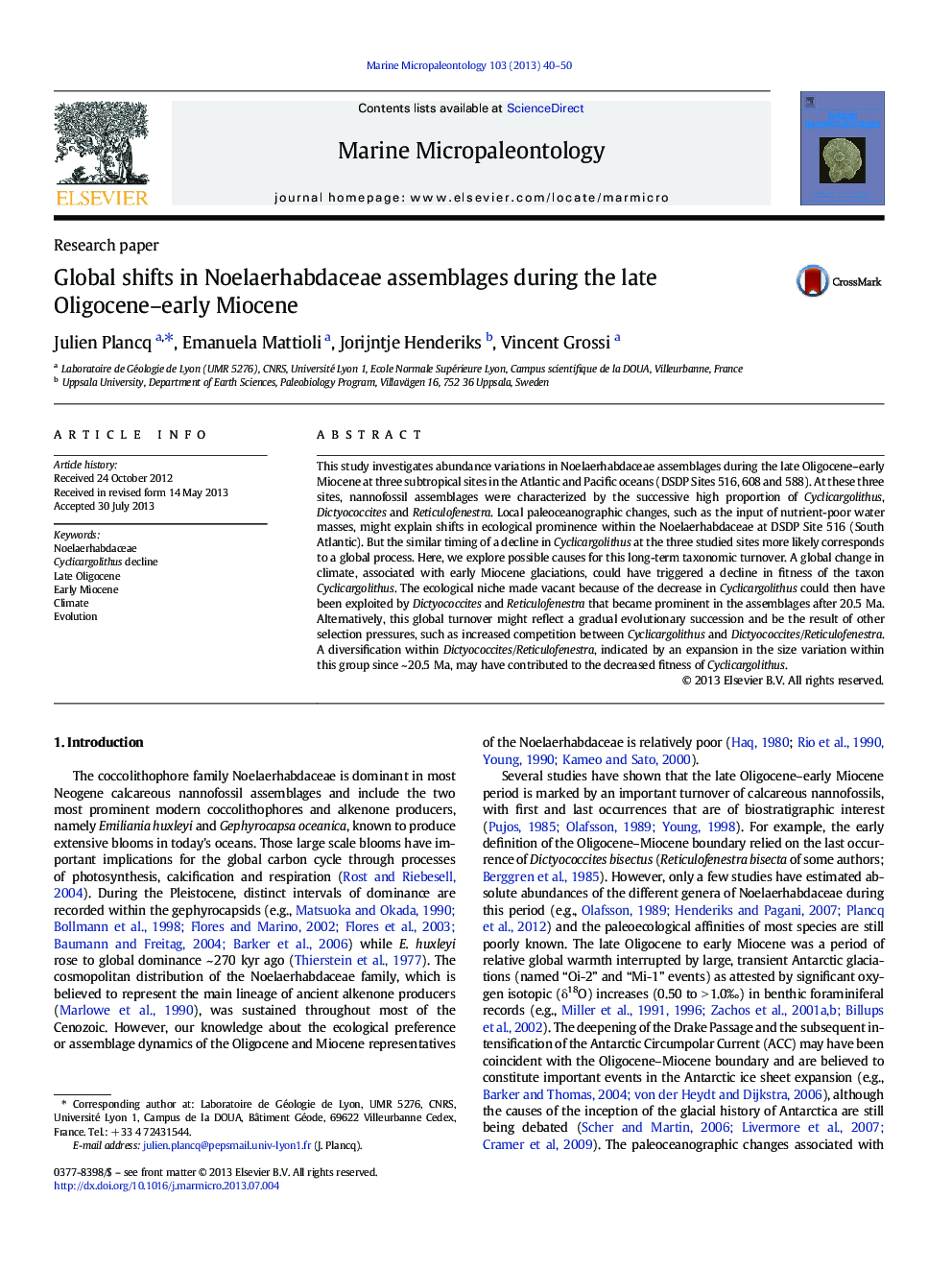| Article ID | Journal | Published Year | Pages | File Type |
|---|---|---|---|---|
| 4748863 | Marine Micropaleontology | 2013 | 11 Pages |
•We quantified Noelaerhabdaceae assemblages during the late Oligocene–early Miocene.•A successive dominance of Cyclicargolithus and reticulofenestrids is highlighted.•Similar succession is observed in three sites from the Atlantic and Pacific oceans.•This change is linked to global paleoceanographic changes or evolutionary process.
This study investigates abundance variations in Noelaerhabdaceae assemblages during the late Oligocene–early Miocene at three subtropical sites in the Atlantic and Pacific oceans (DSDP Sites 516, 608 and 588). At these three sites, nannofossil assemblages were characterized by the successive high proportion of Cyclicargolithus, Dictyococcites and Reticulofenestra. Local paleoceanographic changes, such as the input of nutrient-poor water masses, might explain shifts in ecological prominence within the Noelaerhabdaceae at DSDP Site 516 (South Atlantic). But the similar timing of a decline in Cyclicargolithus at the three studied sites more likely corresponds to a global process. Here, we explore possible causes for this long-term taxonomic turnover. A global change in climate, associated with early Miocene glaciations, could have triggered a decline in fitness of the taxon Cyclicargolithus. The ecological niche made vacant because of the decrease in Cyclicargolithus could then have been exploited by Dictyococcites and Reticulofenestra that became prominent in the assemblages after 20.5 Ma. Alternatively, this global turnover might reflect a gradual evolutionary succession and be the result of other selection pressures, such as increased competition between Cyclicargolithus and Dictyococcites/Reticulofenestra. A diversification within Dictyococcites/Reticulofenestra, indicated by an expansion in the size variation within this group since ~ 20.5 Ma, may have contributed to the decreased fitness of Cyclicargolithus.
